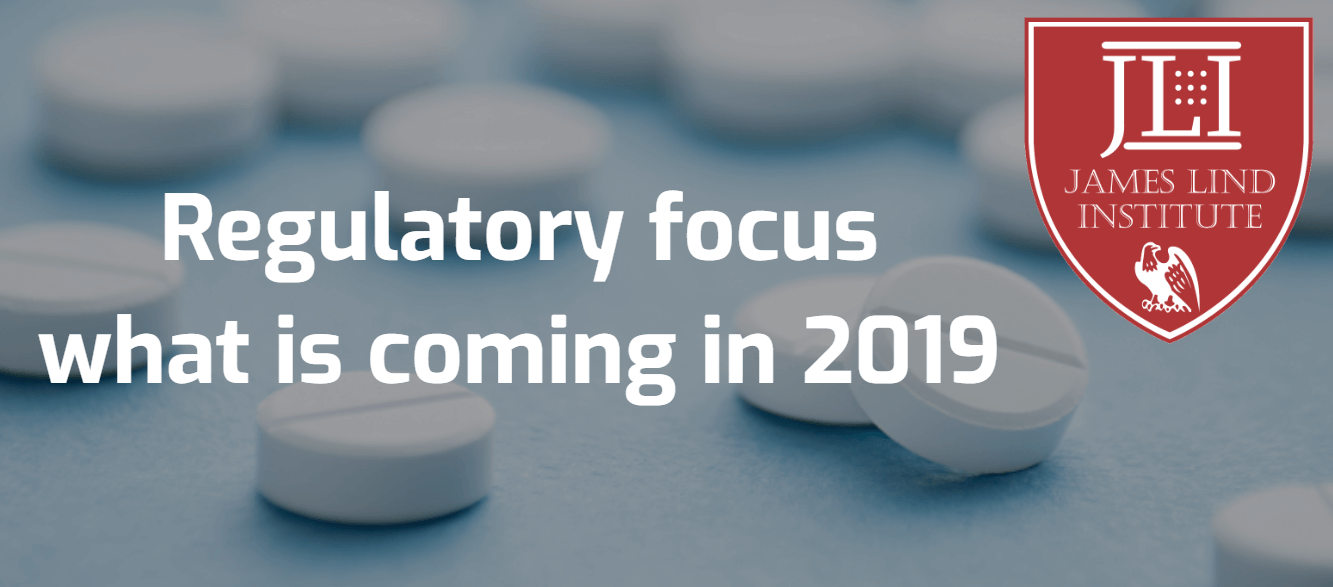Various companies, organisations and healthcare are tracking key regulatory compliance trends and developments to be addressed in 2019.
Regulatory compliance
Regulatory compliance is created with intention to heighten scrutiny and positively impact the manner in which products or services are produced and delivered. Regulatory compliance provides guardrails with an overall mission to serve and protect the public regardless of shifts in the regulatory landscape. Compliance modernization helps pursue the core mission to achieve compliance efficiently and effectively. The forward approach harnesses the best available compliance technologies and practices to comply with current and future regulatory requirements. The ongoing need to drive technological advances and market expectations are constantly rising. There is a need to allow more transparency in public engagement advocating, reduction in regulations and control of regulatory costs by inducing prevalent audit methods that implement effective and robust compliance programs mitigating risk and managing the complex regulatory landscape. Importance for more digital methods applied to patient or consumer service arena and appropriate user access technologies for defined processes is growing in order to meet the requirements of consumer for a patient friendly level of convenience. Employee retention strategy and training programs can meet the expected shortage of professionals and reduce potential attrition caused by increased regulatory scrutiny on the supply side.
Updates in ICH guidelines
Food and Drug Administration experts and health professionals assembled do discuss different International Council for Harmonisation (ICH) guidelines of technical requirements for human use and plan meetings in 2019. This includes clinical trial guidelines and good clinical practice (GCP) modification to adopt a quality-by-design framework for clinical studies expanding the scope for a broad range of data sources, electronic health records and study designs pertinent to the current scenario (E8(R1)). The selective approach of developed guidelines can be appropriately used to optimize safety data collection and deal with late-stage pre-marketing or post-marketing studies (E19). To ensure routine patient care is not compromised, selective safety data collection; early consultation with regulators for selective approach; local or regional safety reporting and sponsor or investigator requirements should be considered. Changes in the guidelines for nonclinical safety testing in pediatric medicine support can reduce the need for juvenile animal studies (S11). Bioanalytical method validation (M10) provides recommendations for validation of chemical or biological drug quantification assays and application of sample analysis for non-clinical and clinical studies.
Some revisions in the guidelines target streamlining clinical development process for clinical evaluation, interval prolongation and proarrhythmic potential for non-antiarrhythmic drugs (E14/S7B); biopharmaceutics classification system-based biowaivers (M9); assessment and control of DNA reactive impurities in pharmaceuticals to limit potential carcinogenic risk (M7(R2)); clinical electronic structured harmonized protocol (M11); rodent carcinogenicity studies for human pharmaceuticals (S1(R1)); detection of reproductive toxicity by human pharmaceuticals (S5(R3)); handling residual solvents (Q3C(R8)) and elemental impurities (Q3D(R2)); support towards continuous manufacturing (Q13). The guidelines were updated to ensure biopharmaceutic classification of medicinal products; reduce expenditure and time for in vivo pharmaceutical development studies to prove the biopharmaceutical quality of the medicinal product; clarify and address quality and safety issues or concerns; establish internationally harmonized standard template for clinical protocols or documents to support consistency and exchange protocol information across sponsors; and evidence approach to characterize carcinogenicity risk study. Quality issues relevant to harmonize the quality management system across a product’s lifecycle and identify opportunities for additional guidance have also been recognised.
Additional Revision and Updates
The Medical Dictionary for Regulatory Activities (MedDRA) and electronic standards for transfer of regulatory information deals with the electronic submission of individual case safety reports (M1, M2). Implementation and testing of training and preparing map routes (E2B(R3)) will be crucial for administration of terms applicable in European Directorate for the Quality of Medicines (EDQM). ICH area of interest includes monitoring technology and impact of regulatory trends; fast healthcare interoperability of resources (HL7) and related considerations; managing relations with standards development organizations. Local support is expected to focus on data quality and medication errors, managing relations with standards development organizations, monitoring technology and regulatory trends. Regulators intend to redefine and establish the clinical trial or sensitivity analysis framework for translating trial objectives (E9(R1)), expanding or revisiting issues on missing data and assays to estimate treatment effect. Pediatric extrapolation guidelines (E11A) developed to reduce the sizable gap between an initial approval and inclusion of pediatric-specific information in product labelling shall harmonize methodologies or strategies to incorporate extrapolation into overall drug development plans.
Overall Regulatory focus in 2019
Internationally harmonized standard template of guidelines is an effort to establish a format and content of documents to support consistency across sponsors and exchange of clinical protocol information. This also allows regulators to better understand pharmaceutical quality systems for management of post-approval changes in generics and product’s lifecycle (Q12); identify opportunities for additional guidance in bioequivalence or other areas for harmonization. Addendum along with question and answer document will also be developed to clarify quality and address safety issues or concerns identified after implementation of certain revisions. Translation of regulatory focus with precise definition and updated version of framework, plans, modification and revisions will be made available to the public. The guidelines will be finalised based on public consultation and comments from industrial groups. New topics related to harmonising parameters to meet regulatory requirements in designing, conducting, evaluating and interpreting drug interaction studies for development of new therapeutic products and adaptive clinical trial designs will be expected to be initiated in the future (M12, E20).
Online Course at JLI
James Lind Institute (JLI) provides an online program – Advance PG Diploma in Clinical Research & Regulatory affairs with focus on clinical trial regulatory compliance.
For more information please visit: www.jli.edu.in


